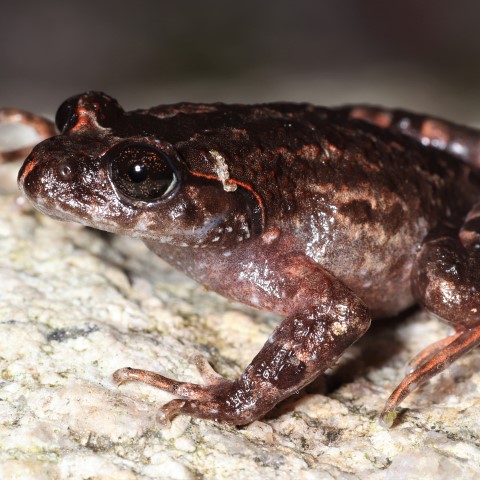Conservation Actions
Conservation ActionsThe species occurs within Pulong Tau National Park, which has only been recently gazetted (in the last 2-3 years) and there is no current infrastructure or field staff in place, so it is not well protected at present (I. Das pers. comm. March 2018).
Conservation Needed
Enforcement of the park's boundaries is needed to address logging issues within the park (Malaysia Red List Assessment Workshop March 2018).
Research Needed
Studies on its population size, distribution and trends, life history and ecology are needed.
Location Information
This species is only known from its type locality, Gunung Murud, in the northernmost portion of Pulong Tau National Park, northern Sarawak, Malaysia, at 2,152 m asl (Hertwig et al. 2014). It may occur more widely in Pulong Tau National Park. It is thought to be restricted to the higher elevations of 2,000 m asl and above (Y.M. Pui pers. comm. March 2018). It occurs in one threat-defined location and its extent of occurrence (EOO) is 10 km2.Geographic Range
Extant
Malaysia




